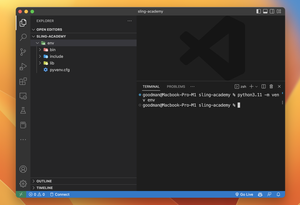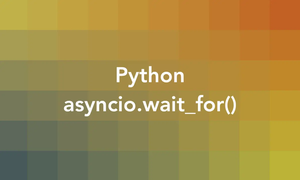aiohttp is an open-source Python library that can be used to make HTTP requests asynchronously (with the async/await syntax). A timeout is a limit on how much time a request can take before it is canceled and an exception is raised.
This concise, example-based article will walk you through three different ways to specify a timeout for your requests when using aiohttp to prevent your program from hanging or wasting resources when the server is slow or unresponsive (the default timeout set by the library is 300 seconds seems too long for most network operations).
Using the timeout parameter of the session.get() method and the like
You can use the timeout parameter of the session.get(), session.post(), session.head(), session.put(), session.patch(), session.options(), and session.delete() methods to set a timeout for a single request (set it to 0 or None for an unlimited timeout).
Example:
# SlingAcademy.com
# This code uses Python 3.11.4
import asyncio
import aiohttp
async def main():
async with aiohttp.ClientSession() as session:
async with session.get(
"https://api.slingacademy.com/v1/sample-data/blog-posts",
# set timeout to 1 second
timeout=1,
) as response:
print(response.status)
print(await response.json())
asyncio.run(main())If the time taken by a request is longer than the timeout specified, then an exception will be raised, and the request will be canceled. You can use a try-except block to gracefully handle the exception and perform some actions, such as retrying the request, logging the error, or returning a default value.
Example:
try:
async with session.get(
"https://api.slingacademy.com/v1/sample-data/blog-posts",
# set timeout to 1 second
timeout=1,
) as response:
print(response.status)
print(await response.json())
except asyncio.TimeoutError:
print("The request took too long to complete.")See also: Sample Blog Posts – Public REST API for Practice.
Using the ClientTimeout class
You can use the ClientTimeout class to create a timeout object that specifies different types of timeouts, such as connect, sock_connect, sock_read, or total. You can then pass this object to the timeout parameter of the ClientSession constructor to apply it to all requests made by that session.
In the example below, we’ll create a session with a connect timeout of 5 seconds and a read timeout of 15 seconds:
# SlingAcademy.com
# This code uses Python 3.11.4
import asyncio
import aiohttp
async def main():
# create a client timeout object
client_timeout = aiohttp.ClientTimeout(connect=5, sock_read=15)
async with aiohttp.ClientSession(timeout=client_timeout) as session:
# make your requests here
asyncio.run(main())This way is convenient if you want to set the same timeout for multiple requests.
Using the timeout parameter of the session.request() method
This approach uses the timeout parameter of the ClientSession.request() method to set a timeout for any HTTP method, such as GET, POST, PUT, DELETE, etc.
Example:
# SlingAcademy.com
# This code uses Python 3.11.4
import asyncio
import aiohttp
async def main():
async with aiohttp.ClientSession() as session:
async with session.request(
"POST",
"https://api.slingacademy.com/v1/sample-data/products",
# set timeout to 5 seconds
timeout=5,
json={
"name": "Example T-Shirt",
"price": 19.99,
"description": "A T-Shirt with the Sling Academy logo on it.",
},
) as response:
print(response.status)
print(await response.text())
asyncio.run(main())See also: Sample Products – Mock REST API for Practice.











